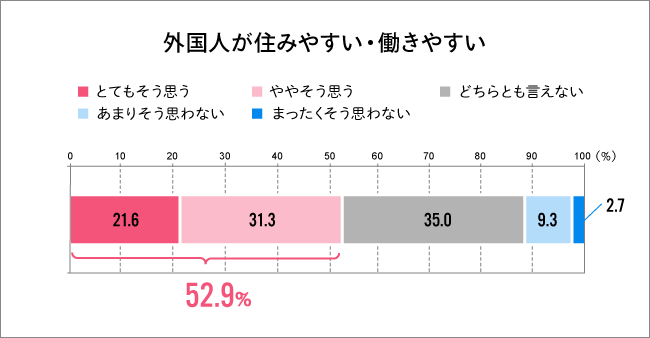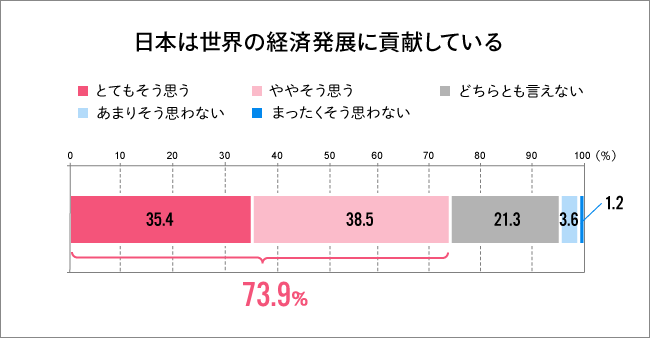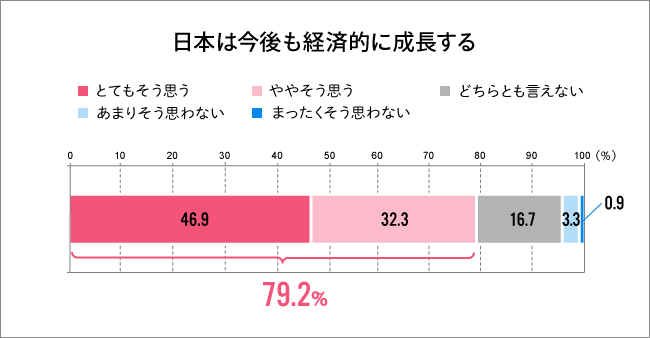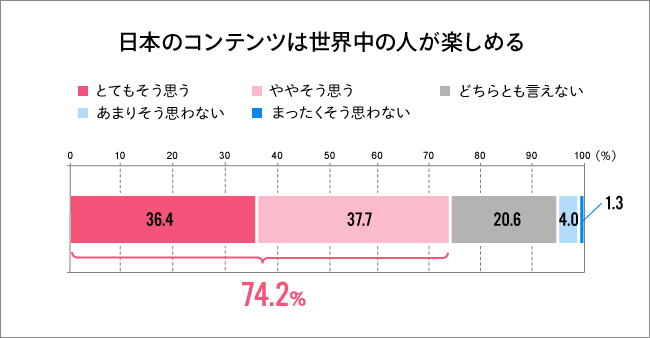Many people overseas seem to hold images of Japan as "diligent," "polite," and "high-quality" (according to the Japan Brand Survey 2016).
I believe that widely shared stories about Japan—such as people acting calmly during major disasters or the speedy cleaning service on the Shinkansen—are increasingly reinforcing this image.
You might think, "People have such a high regard for Japan and such a positive image. Could it be that Japan is seen as an incredibly great country?" But is that really the case?
This series explores insights for future inbound business based on the "Japan Brand Survey 2019," conducted in December 2018 across 20 countries and regions. Part 2 delves deeper into impressions of Japan from multiple perspectives.
Japan and Diversity: Are "Women," "Seniors," and "Foreigners" Thriving?
While awareness of diversity has grown in Japan in recent years, leading to various initiatives, how is this perceived overseas? We asked about impressions from the perspectives of "women," "the elderly," and "foreigners."
First, "women." In the World Economic Forum's "Gender Gap Index 2018," which measures the degree of gender disparity worldwide, Japan ranked 110th out of 149 countries surveyed. Among the G7 nations, it ranked last.
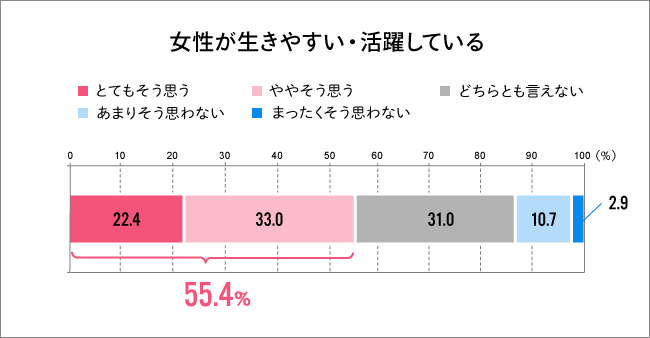
Despite this, 55.4% of respondents overall believed Japan is a country where "women can live comfortably and thrive." While ASEAN countries, which generally hold a favorable view of Japan, scored high, East Asian countries with deeper knowledge of Japan—particularly Taiwan, which has high favorability and visitation rates—showed a significantly lower result of 36.7%. Taiwan's assessment likely reflects a more accurate understanding of the reality.
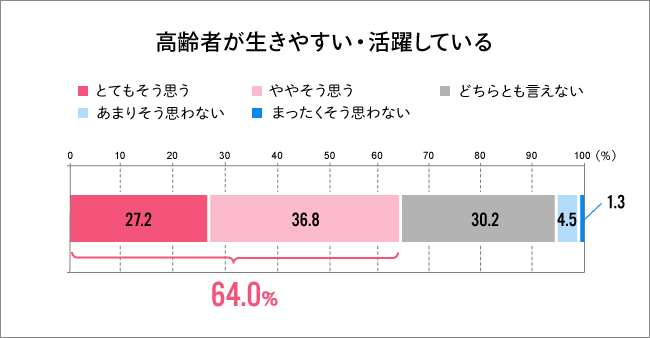
On the other hand, while Japan is also known for its aging population, 64.0% of respondents believe it is a country where "the elderly can live comfortably and actively participate," a higher result than the perception regarding women. By region, ASEAN countries again gave the highest rating at 76.4%, followed by Europe at 61.3%. The high rating from Europe, which also grapples with aging, may stem from its recognition of Japan as the world's most aged nation. Against the backdrop of Japan's high-quality healthcare, Europeans likely know that Japanese seniors remain active and working.
Finally, "foreigners." While the number of foreign residents has increased annually, reaching about 2% of Japan's total population (as of the end of June 2018), only 52.9% of respondents believe Japan is "easy for foreigners to live and work in." This result is even lower than that for "women."
By country, Germany has the lowest score (38.0%). By region, North America scores 43.8%. While Japan is growing in popularity as a travel destination, it still doesn't seem to be viewed as an attractive country to live in.
How influential is Japan globally?
The G20 Summit was held in Osaka at the end of June, but how influential is Japan perceived to be globally?
A significant 73.9% of respondents believe "Japan contributes to global economic development." This score was particularly high in ASEAN (85.5%), a region Japan has cooperated with and supported for many years.
Furthermore, scores in the European region were also high at 74.1%, partly due to positive evaluations from countries like Italy, Russia, and Turkey, where many respondents stated they "like Japan." This suggests that expectations and recognition of Japan's influence in the economic sphere remain high.
So, what about cultural influence, including the booming food scene?
67.1% of respondents believe "Japanese culture is loved by people around the world," with particularly high scores among the generations shaping the future—those in their 20s and 30s (20s: 69.4%, 30s: 72.2%). Interest in Japanese culture is growing, suggesting it will increasingly captivate the world and enhance its cultural influence.
What about Japan's future potential?
Following the discussion on global influence, let's briefly examine assessments of Japan's future prospects.
First, regarding economic growth potential, 79.2% of respondents feel "Japan will continue to grow economically," indicating high expectations remain.
Looking at regional breakdowns, ASEAN and Europe showed high scores, while East Asia—where Japan is located—showed relatively lower expectations (61.6%). This likely reflects China's significant presence in East Asia. Crucially, assessments of Japan's technological prowess—essential to discussing its growth potential—also scored very high: 82.3% agree "Japanese products are excellent," and 86.5% agree "Japan has high technological capabilities."


Let's also examine Japan's content capabilities, which have gained significant global popularity in recent years.
74.2% of respondents believe "Japanese content can be enjoyed by people around the world." Scores are high not only in ASEAN but also in North America at 72.4%.
By country, Thailand stands out with a particularly high score of 91.3%, meaning nearly 90% of people there feel this way.
Expectations are high not only for products but also for content, and overall, it feels like there is still considerable hope for Japan's growth potential.
Through this survey, while Japan still seems lacking from a diversity perspective, its global influence and future growth potential are highly regarded, revealing the high expectations the world holds for it.
However, a disappointing trend emerged: overall evaluations were not particularly high in East Asia, the region closest to Japan and most familiar with it.
Japan is often perceived as "diligent" and "polite," but as more foreigners visit and understanding of Japan deepens, this image is likely to evolve significantly. Going forward, we will increasingly need to be conscious of "Japan as seen from abroad."
Japan Brand Survey 2019 Overview
・Purpose: To understand overseas consumers' perceptions and actual behavior regarding the "Japan Brand" in general, including food, tourism, and Japanese products
・Target Areas: 20 countries and regions
China (Group A = Beijing, Shanghai, Guangzhou; Group B = Shenzhen, Tianjin, Chongqing, Suzhou, Wuhan, Chengdu, Hangzhou, Dalian, Xi'an, Qingdao), Hong Kong, Taiwan, South Korea, India, Singapore, Thailand, Indonesia, Malaysia, Vietnam, Philippines, Australia, USA (Northeast, Midwest, South, West), Canada, UK, France, Germany, Italy, Russia, Turkey
*This time, Brazil—which showed little change in past survey trends—was excluded, while Turkey, gaining attention for inbound tourism, was added.
・Survey Method: Online survey
・Respondent criteria: Men and women aged 20–59 *Middle-income level and above
*Definition of "middle-income class" (income criteria): Criteria set for each country based on national average income (OECD statistics, etc.) and social class classification (SEC)
・Sample size: China: 300 each for A and B groups, total 600; USA: 600; Other regions: 300 each, total 6,600
・Survey Period: December 2018
・Research organization: Video Research Ltd.



